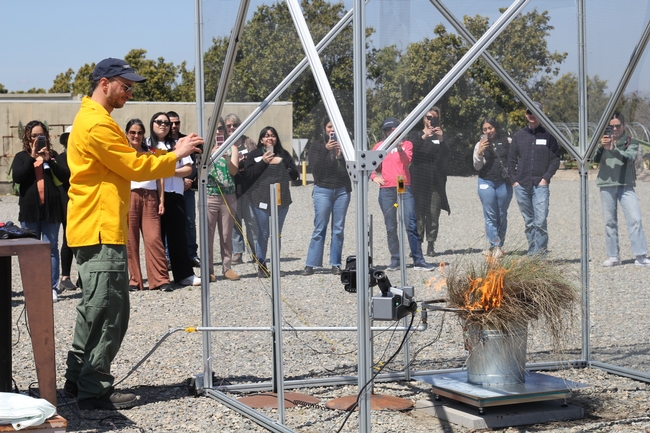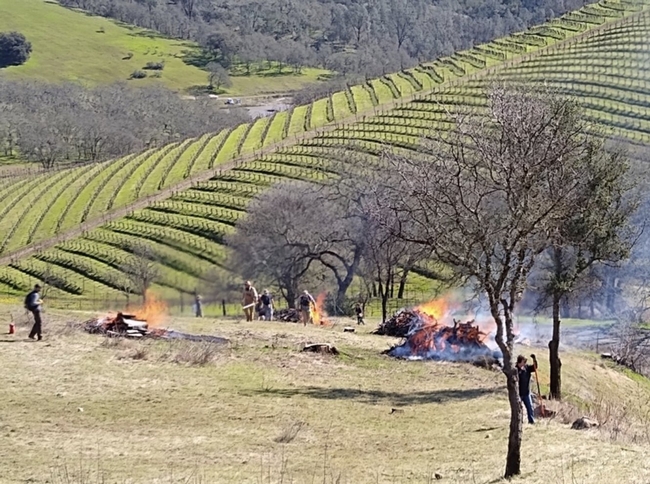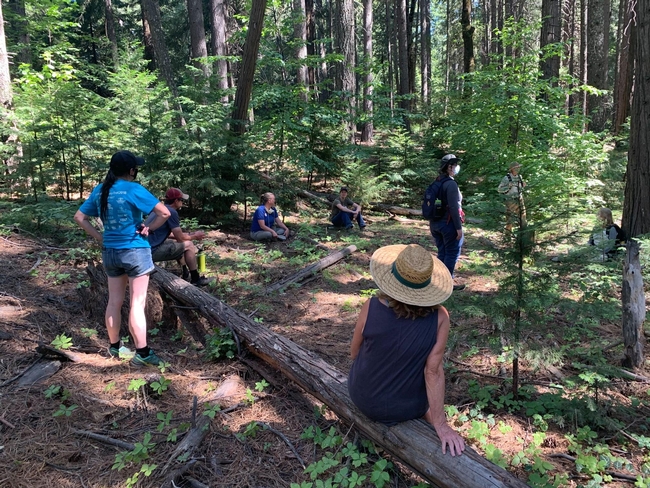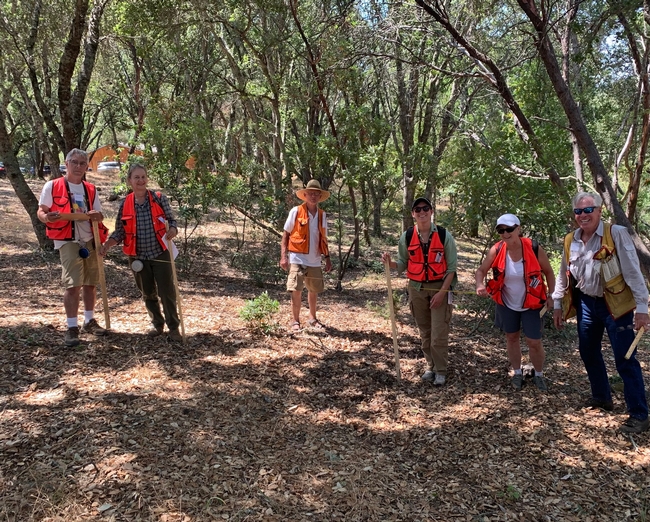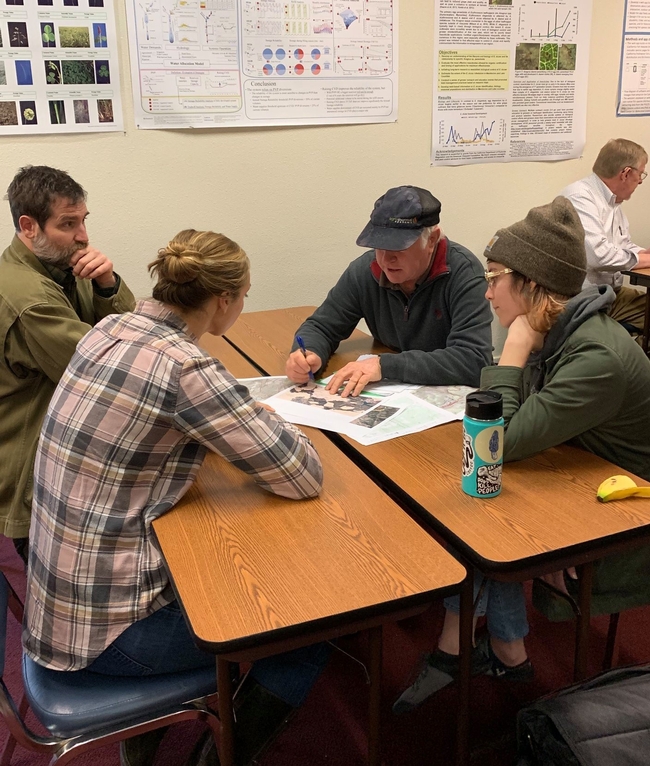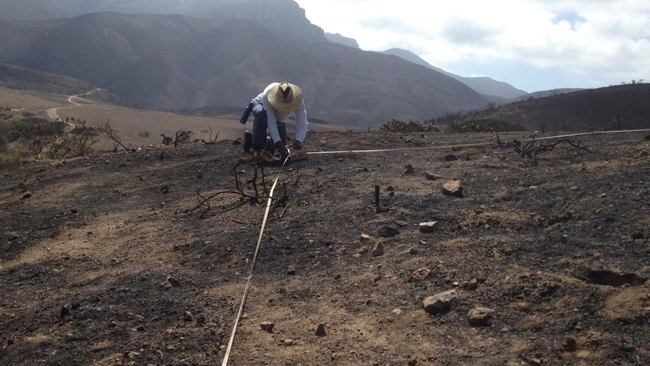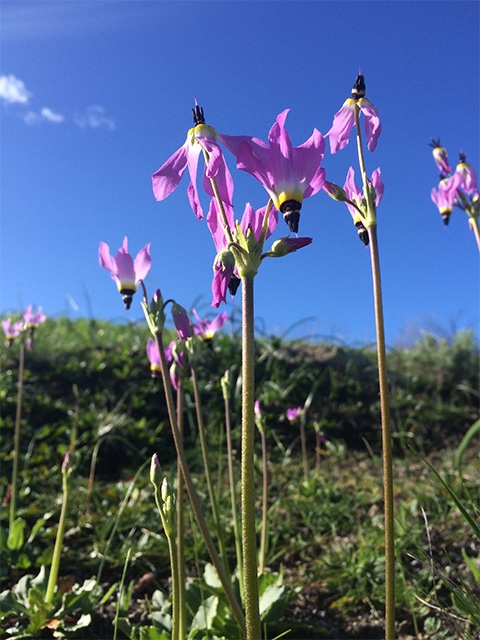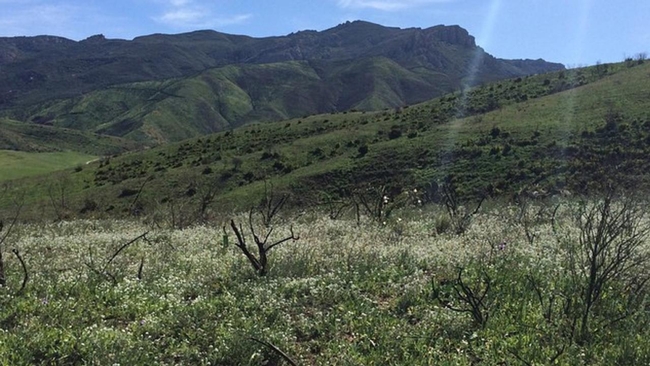Posts Tagged: wildfire
Latest research in fire science focus of free webinar series
Wildfire, cultural and prescribed burns, plant flammability among topics covered
Interested in learning about some of the latest research in fire science and stewardship? Join the UC ANR Fire Network for a series of free lunchtime webinars to explore fire science topics with colleagues from across the globe.
This four-part webinar series will address fire in land management, plant flammability, fire history and management and forestry and fuel profiles.
Everyone is welcome to watch the Hot Topics in Fire Science and Stewardship Webinar Series.
Restoring Fire to Meadows and Other Cultural Landscapes
Presenters: Alice Lincoln-Cook, California Indian Basketweavers Association; Brian Peterson, Fire Forward
- May 29, noon–12:45 p.m. Pacific Time
- Register by May 29: https://bit.ly/3Qksc0J
How Can We Assess Plant Flammability?
Presenters: Jane Cawson, University of Melbourne; Max Moritz, UC Santa Barbara and UC ANR
- June 5, 3–3:45 p.m. Pacific Time
- Register by June 4: https://bit.ly/3WetrlA
Nuances in Fire History and Management: Lessons from Oregon Presenters: Andrew Merschel, U.S. Forest Service Pacific Northwest; Chris Dunn, Oregon State University
- June 12, noon–12:45 p.m. Pacific Time
- Register by June 11: https://bit.ly/44fMU7u
Forestry and Fuel Profiles
Presenters: Don Radcliffe, University of Washington; Eric Knapp, U.S. Forest Service Pacific Southwest
- July 17, noon–12:45 p.m. Pacific Time
- Register by July 16: https://bit.ly/4aTqI5Q
For more information, visit https://ucanr.edu/sites/fire/Home_430/Events.
Wildfire preparedness strategies for farms covered in UC ANR webinars
UCCE advisors will present webinars on May 21 and 28
Late spring rains have delayed California's fire season this year, which provides farmers and ranchers an opportunity to improve their wildfire preparedness. Barns, wood fencing, hay and other property commonly found on farms have inherent vulnerabilities to wildfire.
Fortunately, buildings and infrastructure can be hardened and maintained to reduce their vulnerability to fire and fire-related damage to agricultural resources. Having a plan in place to keep livestock safe and healthy is essential to maintaining animal health and resume operations as quickly as possible post-wildfire. Join the UC Agriculture and Natural Resources Fire Network team to learn about wildfire preparedness strategies for farms and ranches.
The two-part webinar series will cover hardening structures and managing livestock during wildfire.
Part 1: Ranch Hardening and Wildfire Preparedness Strategies for Agricultural Structures
- May 21 at 6-7 p.m.
- Join UC Cooperative Extension fire advisor Luca Carmignani and UCCE forest advisor Yana Valachovic to discuss best practices for incorporating principles of structure hardening and defensible space into agricultural structures and operations.
- Register by May 20 at https://bit.ly/3y1MbuP. Link to webinar will be emailed to registrants.
Part 2: The Realities of Managing Livestock Health During Wildfire
- May 28 at 6-7:30 p.m.
- Join UCCE livestock and natural resource advisors and our partners for a set of presentations about managing livestock health during wildfire events and what to do if you find yourself trapped by an approaching wildfire.
- Register by May 20 at https://bit.ly/3y1MbuP. Link to webinar will be emailed to registrants.
Supporting Community Wildfire Preparedness: A Conversation with Tahoe RCD’s Jason Brand
When looking to improve a region's wildfire resiliency, considering the impact of neighborhood level action cannot be understated. By tapping into existing community ties, the Tahoe RCD's Network of Fire Adapted Communities (Tahoe Network) program is...
Connecting California’s forest landowners with California Tree School
While trees and forests are often emblematic of constancy in a fast-paced world, our state's forests are actually changing before our eyes. Since 2020, the UC ANR Forest Stewardship Education (FSE) program has been helping California's forest landowners be proactive about the inevitable shifts their forestland will experience. The Forest Stewardship and Post-Fire Forest Resilience workshop programs use an online educational format, which guide landowners through the basics of creating forest management plans and managing post-fire landscapes, respectively. Now, the FSE team is piloting a new program to engage a wider audience of forest landowners and community members passionate about trees.
This spring, the Forest Stewardship and UC ANR Fire Network teams are holding the first California Tree School, where individuals attend multiple in-person classes on the forestry topics they are most curious about. “The existing online programs are very focused on forest management plans and post-fire activity, and [Tree School] lets us tackle other topics,” said UC ANR forest and natural resources advisor Susie Kocher.
A one-stop shop for continuing forestry education
California Tree School was inspired when Forest Stewardship Academic Coordinator Kim Ingram, Post-fire Academic Coordinator Katie Reidy and Kocher attended Oregon State University Extension's Tree School event in Clackamas County, Oregon. OSU Tree School is a day-long experience comprised of classes that cover the different dimensions of forestry: constructing a house from your own timber, carbon cap and trade, and buying portable sawmills are just a small sampling of the options for attendees. OSU Tree School students ranged from forest landowners to community college students, contributing to a space which would facilitate community connections as well as learning.
Kocher described the experience as a “a great one-day, one-stop shop to keep up-to-date on what we [forest landowners and professionals] should know.” Excited by the breadth of opportunities offered at OSU's Tree School, Ingram, Kocher and Reidy were inspired to bring the format to California.
“It's our time to discuss the whole ecosystem,” noted Reidy. “Tree School is bringing in the trustworthy, reliable group of experts who can provide more information on the questions pertaining to landowners' specific goals.”
California Tree School will be offered in two locations this spring, with CA Tree School- Hopland taking place on May 4, and CA Tree School- El Dorado on June 1. Similar to OSU's Tree School, attendees are expected to be a mix of forest landowners, natural resource professionals and interested community members.
Connecting statewide professionals; personalizing forestry education
Tree School offers attendees the opportunity to focus on subjects that pertain to their specific learning needs. This personalized approach is a new foray for the Forest Stewardship team, but is something that Ingram says workshop participants have been wanting for some time.
“Our participants never think they learn enough. They are always asking for more information, and this Tree School gives us the chance to expand on things we might not have had a chance to go over in the workshop series,” remarked Ingram. Additionally, Tree School instructors had creative freedom when it came to developing their classes, from the topic to the class format. This is evident when browsing through each session's class catalog. CA Tree School attendees choose four classes to attend, meaning they can build their first burn pile, understand the ins and outs of regional wildlife, paint outdoors and learn how to aid statewide reforestation efforts all in one day.
“I felt that Tree School created a sense of trust around complex topics,” noted Reidy about her experience last year in Oregon. For CA Tree School, the Forest Stewardship team aims to do the same. This meant recruiting from throughout the UC ANR network and other organizations, including CALFIRE and CARCD (California Association of Resource Conservation Districts), to bring trusted voices to the community.
“What's exciting about Tree School is that we are bringing natural resource professionals from all around to engage everyone at the same time, and all in one place,” noted Ingram.
The team is excited to see all the connections that will be made between community members and professionals during this pilot year, and “if this is successful and we can bring it back next year,” commented Kocher, “we are definitely interested in partnering with more people and expanding our outreach.”
Making CA Tree School an in-person experience was important to the team, as much of the education is hands-on. Additionally, Kocher sees enhanced potential for building personal connections: “In person, you have this opportunity for people to identify as part of a community,” noted Kocher, “So I'm excited for people to hang out with each other.”
Encouraging an informed community
“You can't separate the emotional from the physical, and there are a lot of topics in forestry like wildfire and economics that can be a bit of a downer,” said Ingram. “I'm excited to help create a positive learning environment, and one that encourages folks to turn to UC Cooperative Extension for these resources.”
“Our main goal here is to get science out there,” concurred Reidy. “The more exposure people have to science, the more confident they feel in themselves and their wants and needs.”
Car fumes, weeds pose double-whammy for fire-loving native plants
Wildflower displays threatened
Northwest of Los Angeles, springtime brings native wildflowers to bloom in the Santa Monica Mountains. These beauties provide food for insects, maintain healthy soil and filter water seeping into the ground – in addition to offering breathtaking displays of color.
They're also good at surviving after wildfire, having adapted to it through millennia. But new research shows wildflowers that usually would burst back after a blaze and a good rain are losing out to the long-standing, double threat of city smog and nonnative weeds.
A recent study led by Justin Valliere, assistant professor in the UC Davis Department of Plant Sciences, found that native wildflowers and other plants that typically flourish following a fire were, instead, replaced by invasive plants on land that received the kind of nitrogen contained in vehicle emissions.
“Many native plants in fire-prone areas rely on fire, and some are entirely dependent on it. Some are even most abundant after a fire,” said Valliere, a UC Cooperative Extension specialist in invasive weed and restoration ecology. “But we found that these fire-following species may be especially vulnerable to the combination of nitrogen pollution and invasive plants.”
That's part of the reason why native plants in these mountains have been declining.
Seeds – banked in the soil and waiting to sprout
The problem faced by native plants can be compared to a drawn-down bank account: Funds withdrawn are not being replaced.
It starts with fire, an important ecological process, Valliere said. Flames burn through plants on the surface and return their nutrients to the soil. Seeds sleeping in the ground wait for the next rain to sprout, then use those nutrients to grow.
“Plant diversity is often highest in growing seasons immediately after a site burns,” he said.
But invading plants have many advantages over native ones. They often sprout earlier, grow faster and create more seeds, all while tolerating drought.
“They're like cheaters,” Valliere said. “They don't follow the same rules.”
Nitrogen, too, is an important piece of every plant's nutrition. They all get a fertilizing boost from nitrogen that floats up in vehicle emissions and falls to the ground. But the invaders use nitrogen and other nutrients to grow faster, winning the race for water and sunlight. As a result, fewer native plants reach maturity, producing fewer seeds that keep their populations thriving.
When the bank balance reaches zero
The 2013 Springs Fire gave Valliere a unique opportunity to study the combined impacts of wildfire and extra nitrogen. He and colleagues from UC Riverside and the National Park Service created test plots in the Santa Monica Mountains where the fire had burned. Then, they added nitrogen to the soil to mimic the amount and type that LA's smog would deposit. Over the study's three years, native plants that typically would have flourished after wildfire instead declined even faster in the plots with added nitrogen.
Native seeds sprouted, but didn't flower. Over time, the soil's bank of seeds drew down.
“Each seed has one chance to flower and reproduce,” Valliere said. “If a seed grows and gets outcompeted, that seed has lost its chance to replenish the seed bank.”
Without the chance to replenish their bank account, native plants will die out, and the whole ecosystem will be thrown out of balance.
“There is inherent value in biodiversity,” Valliere said. “These invasive weeds could prevent the re-establishment of native shrubs after fire, sometimes forever altering the plant community.”
The loss of native plants can have cascading effects on the larger environment, he added. Problems can include the loss of native bees that feed on the flowers, and mudslides when rain makes hillsides unstable.
This problem is likely to repeat in similar areas where biodiversity is highest after wildfires – including parts of the Mediterranean basin, southern Africa and Australia. The addition of city smog “could have serious consequences for the biodiversity of fire-prone ecosystems worldwide,” Valliere warned.
Read the paper, “Nitrogen deposition suppresses ephemeral post-fire plant diversity,” by Justin Valliere, Irina Irvine and Edith Allen.
This article was first published on the UC Davis Department of Plant Sciences website.

